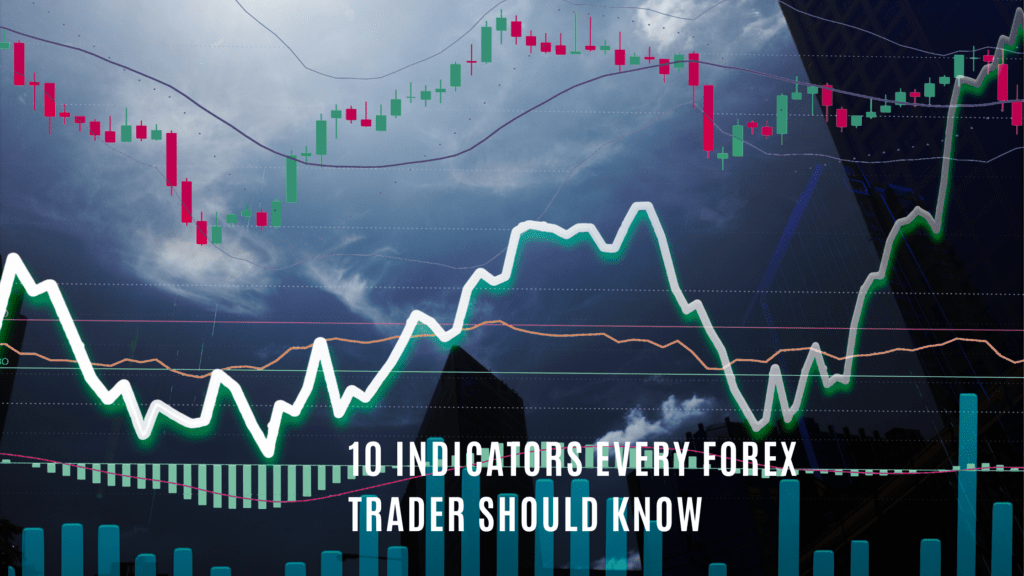The world of forex trading can be complex and overwhelming, especially for beginners. One of the best ways to navigate the market and make informed decisions is by using indicators. Indicators are mathematical calculations based on the price and/or volume of a security. They can help traders identify trends, patterns, and potential buy or sell opportunities.
Every Forex Trader Should Know:
This article will discuss the ten indicators every forex trader should know. Many traders use these indicators because they can potentially supply practical market insight, especially when used with other forms of technical and fundamental analysis and even trading psychology.
Moving Averages (MA)
Moving averages (MA) are one of the most popular indicators used by traders. They are used to smooth out price action and identify trends. The most common moving averages are the 50-day MA and the 200-day MA. Traders typically use the 50-day MA to identify short-term trends and the 200-day MA to identify long-term trends.
Relative Strength Index (RSI)
The relative strength index (RSI) is a momentum indicator that compares the magnitude of recent gains to recent losses. It ranges from 0 to 100 and is used to identify overbought or oversold conditions. Traders typically use RSI to identify potential buying or selling opportunities.
Bollinger Bands
Bollinger Bands are a volatility indicator that consists of a moving average and two standard deviation lines. The upper band represents overbought conditions, while the lower band represents oversold conditions. Bollinger Bands are used to identify possible breakouts and trend reversals.
Stochastic Oscillator
The stochastic oscillator is a momentum indicator that compares the closing price of a currency pair to its price range over a set time. It ranges from 0 to 100 and is used to identify overbought or oversold conditions. Traders typically use the stochastic oscillator to identify possible buying or selling opportunities.
Fibonacci Retracement
Fibonacci retracement is a technical analysis tool that uses horizontal lines to indicate areas of support or resistance at the key Fibonacci levels before the price continues to move in the original direction. These levels are derived from the Fibonacci sequence and are commonly used to identify potential reversal levels.
Moving Average Convergence Divergence (MACD)
The MACD is a trend-following momentum indicator that calculates the difference between a short-term moving average and a long-term moving average. Traders can use it to find potential trend changes or to confirm the strength of a current trend. The MACD also includes a histogram that can be used to identify momentum.
Average Directional Index (ADX)
The ADX is an indicator that measures the strength of a trend. It ranges from 0 to 100 and can be used to identify strong trends, weak trends, and trendless markets. Traders can use the ADX with other indicators to confirm trend strength or to identify potential trend reversals.
Pivot Points
Pivot points are technical analysis levels calculated based on the high, low, and close prices of a currency pair. These levels can be used to identify potential support and resistance levels and can also be used to identify trends. Pivot points can also be used to calculate a target price for a trade.
Commodity Channel Index (CCI)
The CCI is a momentum indicator that can identify overbought or oversold conditions. It compares the current price of a currency pair to its average price over a set time. Traders can use the CCI to identify potential trend changes or to confirm the strength of a current trend.
Average True Range (ATR)
The ATR is a volatility indicator that measures the average range of a currency pair over a set time. It can be used to spot potential breakouts and to set stop-loss levels. Traders can use the ATR to identify possible trend reversals.
Conclusion
Traders can use these ten indicators to help identify trends, chart patterns, support, and resistance levels, potential buy or sell opportunities, and also measure volatility. Traders should remember that indicators work best in conjunction with other analysis tools and market knowledge. Proper risk management is always critical, and it is essential not to risk more than you can afford to lose.

